Ever feel like performance reviews are just paperwork in disguise? You’re not alone. I’ve spent years helping companies, from fast-growing startups to 500+ employee enterprises, ditch the confusion and build performance systems that actually drive growth.
In this blog, I’ll break down:
- What a performance management system really is (beyond HR buzzwords)
- How smart teams choose the right system—not just the flashiest
- The business-changing results I’ve seen firsthand
If performance feels foggy in your org, this guide will give you clarity, strategy, and a few sharp tools to fix it.
Let’s get started.
What Is a Performance Management System?
A performance management system (PMS) is the framework organizations use to set expectations, track progress, give feedback, and develop their people. It’s not just software—it’s a strategy.
Think of it as the GPS for employee performance: helping individuals know where they stand, where they’re headed, and how to get there, minus the awkward annual reviews.
It typically includes:
- Goal setting and alignment
- Continuous feedback and coaching
- Structured appraisals
- Analytics and progress tracking
Modern performance management platforms go beyond outdated annual reviews. They enable real-time feedback, flexible goal management, and development conversations that actually lead somewhere.
In short, it’s not about micromanaging people—it’s about helping them succeed, consistently and visibly. A good PMS isn’t a performance review tool; it’s a performance enablement engine.
Now that we understand what a performance management system is, let’s dig into why organizations are investing in them like never before
Why Performance Management Systems Matter More Than Ever
Let me be blunt: I’ve sat in performance reviews that felt more like courtroom trials than conversations. No context. No data. Just vague feedback like “You need to be more strategic.” What does that even mean?
That’s when it hit me—employee performance management systems aren’t just about tracking people’s output. They’re about creating clarity, trust, and momentum across the business. Here’s why companies are finally waking up to that truth:
1. Annual Reviews Are Broken (and Everyone Knows It)
You know that one meeting at the end of the year where everyone awkwardly pretends to remember what happened nine months ago? That’s the traditional review process—and it’s a mess.
- 95% of managers say they’re unhappy with it.
- Employees often feel blindsided or overlooked.
- I’ve seen high performers leave because their only “feedback” came once a year, and usually from someone who barely worked with them.
And I created this image to help you understand better:
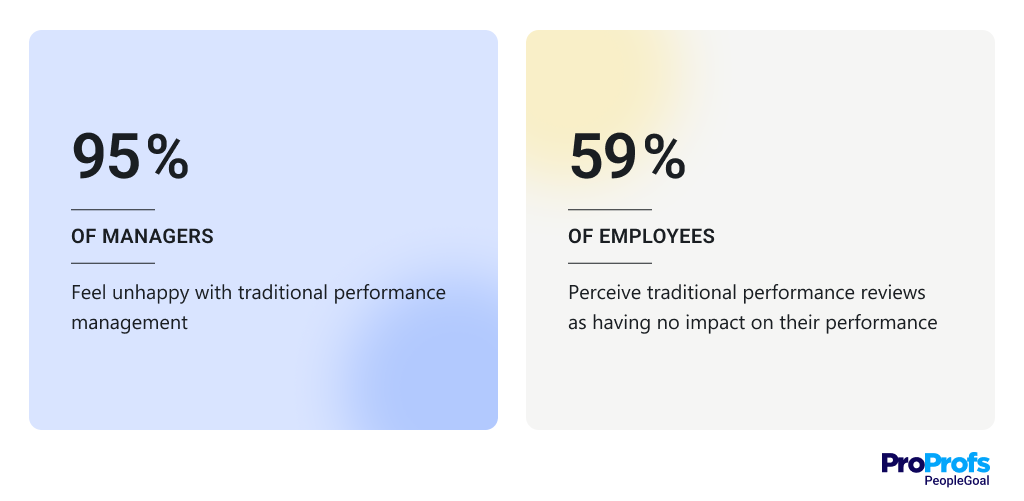
A proper performance management system replaces that chaos with a structured, continuous approach. Goals are tracked. Conversations happen monthly, not yearly. There are no surprises—just consistent feedback that helps people grow in real time.
2. Employees Want Coaching, Not Just Scores
People don’t want a grade. They want to know how they’re doing and how to get better.
Let me give you an example: At one tech company I worked with, they replaced numeric ratings with monthly 1:1 check-ins powered by a new performance management tool. Managers used real examples from the last sprint. Employees responded by setting better goals and asking for stretch assignments. And engagement scores were up by 21% in one quarter.
The takeaway? When you give people timely coaching and direction, they perform better—because they finally know what “better” looks like.
3. HR Needs Data to Make Smart People Decisions
Before modern systems, HR decisions were often based on gut feel. Who seemed to be performing well. Who was “visible.” But now, with the right employee system management tools, I can pull a report that shows:
- Who consistently meets their goals
- Who’s overdue for feedback
- Who’s at risk of burnout (based on feedback patterns or check-in frequency)
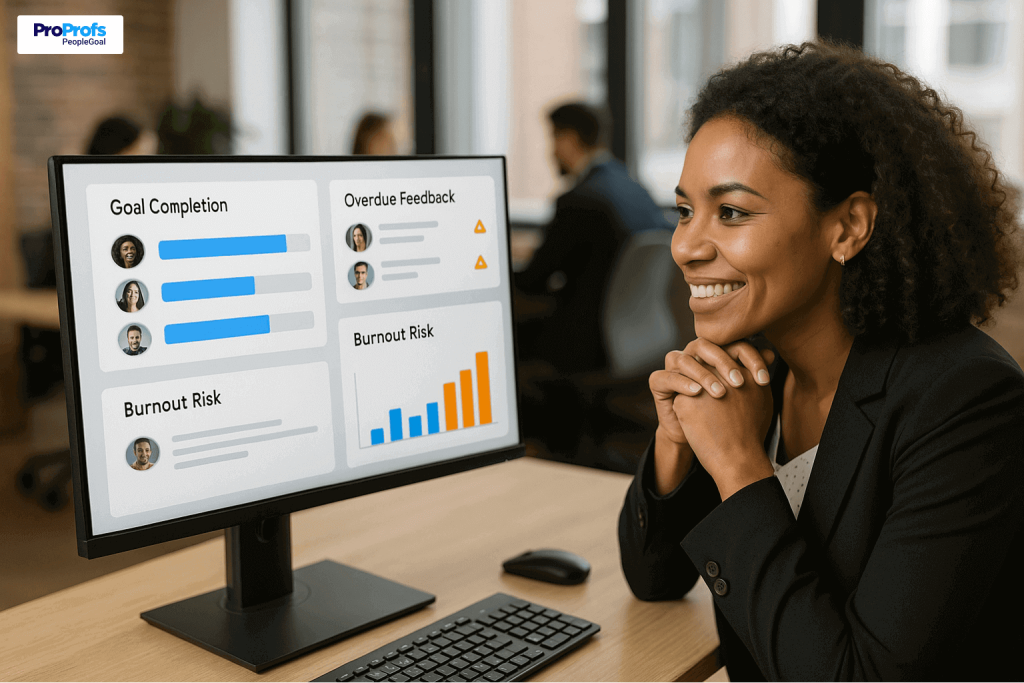
That’s not just data—that’s strategy. When performance data is visual, real-time, and role-based, HR can actually drive business outcomes, not just administer policies.
4. Culture and Retention Start With Performance Clarity
Here’s a hard truth: unclear expectations destroy morale.
In one company I consulted for, half the turnover came from people who “didn’t know if they were doing a good job.” Not because they weren’t—they just never heard it. No goals. No feedback. Just…silence.
Once we rolled out a lightweight management system, with clear learning paths and role-specific goals, turnover dropped 32% over the next six months. That’s the power of visibility.
Since we’ve seen why modern organizations are embracing performance management, let’s now look at what these systems actually do (besides sparing everyone from awkward end-of-year conversations).
What Does a Performance Management System Actually Do?
If I had to sum it up, a great employee performance management system gives structure to something that’s historically been a bit… fuzzy. It takes all the informal notes, mental checklists, “we’ll-talk-about-it-later” promises—and turns them into a living, breathing system.
But this isn’t about micromanaging. It’s about empowering people to thrive. Let me show you how.
1. It Helps You Set (and Actually Track) Goals
I once had a manager who gave me a goal: “Be more proactive.” That was it. No metrics. No context. Just… vibes.
With a real performance management system, goal-setting becomes a disciplined process. You can:
- Create SMART goals or OKRs (Objectives and Key Results)
- Align them with team and company priorities
- Assign due dates, owners, and progress markers
- Monitor them visually on dashboards
So instead of “be more proactive,” you get: “Launch onboarding microsite by Q3, with 90% new hire satisfaction.”
Here’s what a SMART Goal system actually looks like.
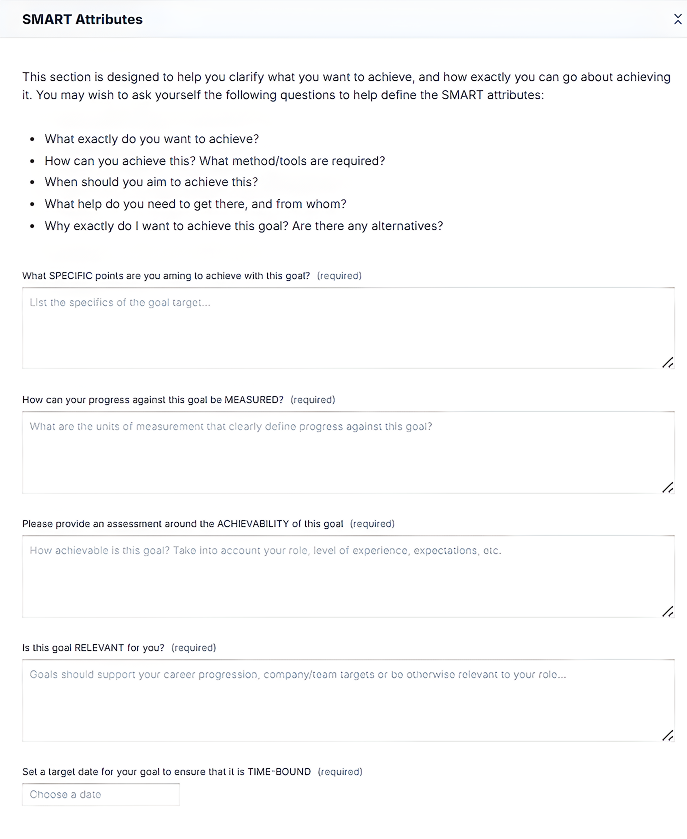
That’s the difference between confusion and clarity—and clarity is rocket fuel.
2. It Makes Feedback an Ongoing Conversation
No more “save it for the review” nonsense. In every high-performing team I’ve seen, feedback flows continuously—not just top-down, but also peer-to-peer and self-directed.
Here’s what the best hr performance management systems enable:
- Scheduled 1:1s with talking points auto-generated from recent activities
- Real-time feedback (give kudos right after a project ends)
- 360° reviews from managers, peers, reports, even clients
- Feedback tagging by competencies (so it’s not just “nice job,” but “great problem-solving on X”)
Check out this image to get a better idea of the approaches to feedback:
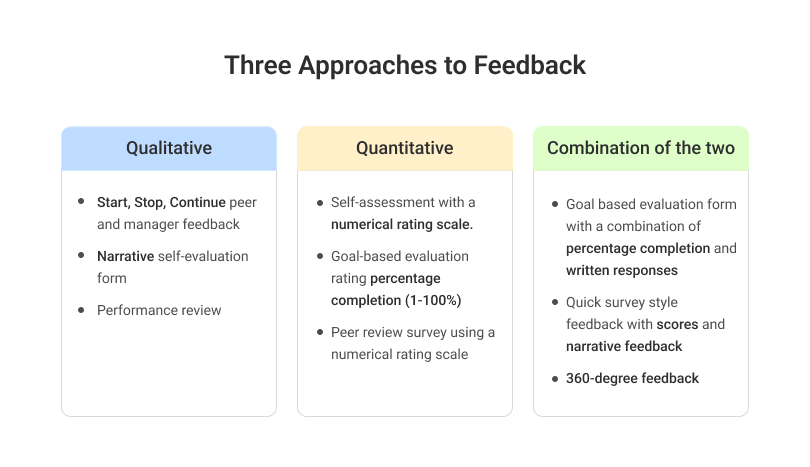
One company I advised added a simple peer feedback loop. In six weeks, team visibility shot up, and managers discovered hidden top performers they’d overlooked for years.
3. It Simplifies Reviews and Appraisals
I’m not saying get rid of performance reviews. I’m saying: stop treating them like a yearly surprise party, with the kind of surprises nobody enjoys.
A smart staff performance management system lets you:
- Run quarterly, biannual, or project-based reviews
- Use customizable templates (role-specific, skill-based, even values-aligned)
- Automate reminders and submissions
- Collect self, peer, and manager feedback in one place
No chasing, no paper forms, no “Can you resend that email from April?”
Reviews become faster, richer, and—dare I say—actually helpful.
4. It Tracks Development and Growth (Not Just Gaps)
Most employee system management tools used to just flag weaknesses.
But now, the best ones show you where someone is strong, evolving, or ready to take on more.
Look for features like:
- Skill mapping and development plans
- Learning path integrations (LMS plug-ins or native training tools)
- Coaching notes and meeting history
- Growth trends over time
When employees see their progress visualized, it drives ownership.
5. It Gives Leaders the Right Data at the Right Time
This is where things get exciting. As a leader, I don’t just want gut feeling—I want clean dashboards and reports that show me:
- Top performers across the organization
- People overdue for feedback
- Who’s growing and who’s stuck
- Engagement patterns tied to manager behavior
The best performance management systems offer rich analytics. And if you’re not using this data for succession planning, compensation strategy, or L&D focus, you’re leaving value on the table.
So, now that we know what a performance management system actually does, the next logical question is: what features really matter when you’re picking one?
Key Features to Look for in a Performance Management System
I’ve seen companies get dazzled by shiny dashboards, only to realize later that the system doesn’t even support 1:1 feedback. Trust me, you don’t want to discover that mid-review cycle.
Whether you’re evaluating a sleek enterprise solution or a lightweight startup-friendly platform, here’s what I always tell clients: focus on features that solve real performance problems—not ones that just demo well.
1. Smart Goal-Setting & Alignment
Without goal alignment, people might be productive, but in entirely different directions.
A solid employee performance management system should support:
- Individual, team, and company-wide goals
- Goal progress tracking in real time
- OKRs (Objectives and Key Results), KPIs, or SMART goals
- Visibility across levels (employees, managers, HR)

Let me give you an example:
In one client rollout, we used the goal alignment module to connect engineering goals to product roadmap milestones. The impact? Less rework. Fewer status meetings. Everyone pulling in the same direction.
2. Continuous Feedback Tools
Performance isn’t an annual event—it’s a weekly, even daily process. That’s why I look for systems with:
- Real-time feedback requests (and nudges when it’s missing)
- Public and private recognition (think digital “shoutouts”)
- Feedback tagging by skill, project, or company value
- Feedback-to-review syncing (no more forgetting what happened in March)
A performance management system that integrates feedback into everyday tools (Slack, email, Teams) gets way more adoption than a “log in and click five buttons” process. That’s the difference between process and culture.
3. Streamlined Performance Reviews
Ah, yes, the classic performance review—dreaded by many, but necessary when done right.
The best tools allow you to:
- Customize review cycles (quarterly, biannual, project-based)
- Build templates tailored to roles or departments
- Automate reminders and review flows
- Combine self-reviews, peer input, and manager evaluations in one thread
I once helped a company shift from an annual review cycle to a quarterly one using a simple platform with pre-built templates. The result? Reviews went from being 2-hour chores to 30-minute strategic check-ins—and managers didn’t revolt.
Here’s a quick video to help you get a better idea on performance reviews:
4. Learning & Development Integration
You can’t talk about performance without talking about growth. A great employee system management approach should connect skill gaps to development paths:
- Skill tracking and competency mapping
- Training recommendations based on performance themes
- Integration with your LMS (or built-in learning modules)
- Development plan templates tied to performance goals
Employees don’t want to be told where they’re weak. They want to know what to do about it. Show them a path forward, and you’ll retain more talent than any pizza party ever could.
Let me give you a real-world scenario.
One of my clients, a multi-location hospitality group, used PeopleGoal as their employee performance management system. They loved it for tracking competencies, running custom 360 reviews, and visualizing skill gaps across departments—from baristas to marketing execs.
But here’s where things got even smarter.
They integrated ProProfs Training Maker to turn every identified gap in PeopleGoal into a development opportunity.

Here’s how it worked:
- When PeopleGoal flagged a competency like “customer conflict resolution” as weak during a quarterly review, it triggered an automated learning path in ProProfs.
- The path included a pre-assessment, a video-based module on emotional intelligence, a scenario-based quiz, and a short survey.
- Once completed, the training results flowed back into PeopleGoal, updating the employee’s competency matrix and notifying their manager.
What did that achieve?
- For HR: A closed-loop system—evaluate, upskill, reassess. No black holes.
- For managers: On-demand development that didn’t require chasing anyone.
- For employees: Clear guidance on what to learn next and proof of growth.
Oh, and every completion in ProProfs was time-stamped and tied to goals in PeopleGoal. So when review time came around, there was no need to ask “Did you ever take that training?” It was all there—visible, verified, and actionable.
5. Analytics & Dashboards for Leaders
This is where the nerd in me gets excited. Because once you’ve got structured data, you can actually do something with it.
Look for performance dashboards that show:
- Goal progress by team or individual
- Feedback frequency and balance (positive vs. constructive)
- Top and bottom quartile performers
- Development trends over time
- Attrition risks (based on disengagement or stagnation)
6. Seamless Integration with Your HR Ecosystem
Even the best performance management system can become a silo if it doesn’t play well with others.
Make sure your system can be seamlessly integrated with:
- Your HRIS (like BambooHR, Darwin Box, Trinet)
- Slack, Teams, Gmail/Outlook (for reminders and feedback)
- Your LMS or learning tools
- Payroll and comp systems (for pay-for-performance models)
Tools like PeopleGoal have really good integration features.
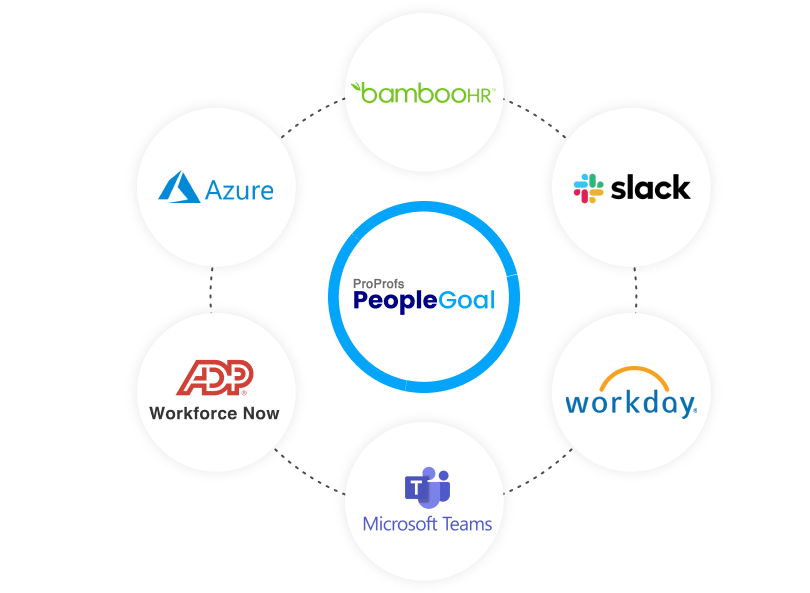
Performance data is most powerful when it flows across systems. Otherwise, you’re just exporting spreadsheets and praying the formulas work.
Bonus Features That Actually Matter
These aren’t always headline features, but trust me—they’re lifesavers:
- Mobile access (because check-ins don’t just happen at desks)
- Multi-language support (especially for global teams)
- Anonymous feedback options
- Automated reminders for feedback, reviews, or goals due
- Role-based access controls (so managers only see their teams)
In short, when choosing a performance management system, look for what enables performance, not just what tracks it. Prioritize flexibility, feedback, development, and visibility.
So, till now, we’ve unpacked the features, seen what a good system looks like in action, and hopefully scared you off from annual reviews forever. Now let’s get a bit more real.
How to Create a Performance Management System (That Actually Works)
Let’s be honest: slapping together a few review forms and calling it a performance management system is like putting a steering wheel on a sofa and calling it a car. If you want a system that drives real results, you must build it with intention—from the inside out.
Here’s exactly how I help companies do it:
1. Define Your Performance Philosophy
Before choosing tools or templates, ask:
What does great performance look like in our company?
This isn’t about buzzwords—it’s about anchoring performance in your culture.
Do you value innovation, speed, teamwork, and reliability? Define those behaviors.
This forms the DNA of your system.
Pro tip: Document 3–5 company-specific performance principles. Use them as your North Star.
2. Choose the Right Performance Framework
Different organizations need different structures:
- OKRs for goal-driven teams
- SMART goals for clarity and accountability
- 360 feedback for growth-focused cultures
- Check-ins and 1:1s for coaching-heavy environments
Pick a primary framework, then layer in what makes sense.
Pro tip: Don’t over-engineer. Start simple, build habits, then add complexity.
3. Design Your Performance Cycle
Annual reviews? Quarterly check-ins? Monthly goal updates? Choose a cadence that supports ongoing growth, encourages timely feedback, and aligns with how your teams actually work.
Define:
- When feedback happens
- Who’s involved (manager-only, peer, self, skip-level)
- What’s tracked at each stage
The best employee performance management systems run on predictable, repeatable rhythms—not vibes and deadlines pulled from thin air.
4. Select or Customize Your Tools
Now—and only now—look at software. Your HR performance management system should fit your process, not dictate it.
Make sure it allows:
- Custom review templates
- Goal cascading and alignment
- Feedback visibility and permissions
- Data export and analytics
And yes, it should be so easy that your managers don’t complain in the first week.
5. Train, Launch, and Normalize
Most failed systems don’t fail because of software.
They fail because people weren’t taught how to use it or why it matters.
Train managers on giving feedback, setting goals, and having growth conversations.
Launch with intention. Then build performance habits into your weekly workflow.
Pro tip: Run a pilot with one department before going company-wide. Learn fast. Iterate faster.
6. Monitor, Improve, and Evolve
Performance management isn’t one-and-done—it’s a living system.
Review what’s working every quarter:
- Are goals being updated regularly?
- Are reviews driving good decisions?
- Are top performers growing—or leaving?
Use feedback loops, adoption metrics, and exit interview insights to continuously improve.
What Problems Does a Performance Management System Solve?
One of the first things I ask when helping a company choose a performance management system is: “What’s broken right now?” You’d be surprised how often I hear the same themes:
- “We have no idea what anyone’s working on.”
- “Our reviews are a formality—everyone gets ‘meets expectations.’”
- “We’re training people, but nothing’s improving.”
- “Managers are winging it.”
Here’s how a modern tool solves those exact issues—and why ignoring them might be more expensive than you think.
1. Vague Expectations = Misaligned Teams
In one company I consulted, two departments had completely different interpretations of what “launch readiness” meant. The result was missed deadlines, frustrated employees, and a lot of finger-pointing.
Well, if I had to generate it using AI, this is how it would look:

2. Feedback That’s Either Non-existent or Too Late
One executive once told me they hadn’t given formal feedback in two years. Not because they didn’t care, but because “nothing was scheduled.” Meanwhile, their team had no idea how they were doing.
A smart tool makes feedback a habit, not an afterthought:
- Nudges for regular 1:1s
- Structured feedback prompts after projects
- Manager dashboards showing who’s overdue for a check-in
This isn’t micromanagement. It’s management. And employees are craving it more than you think.
3. The Review Cycle Is a Nightmare
If your review process involves downloading Word docs, chasing signatures, and praying the folder doesn’t corrupt—congratulations, you’re not alone.
I once helped a 200-person startup move from spreadsheet-based reviews to an integrated employee system management tool. What used to take 6 weeks took 6 days. The difference? Automations, templates, reminders, and everything centralized in one platform.
Imagine reviews that actually help people grow, instead of just being a compliance checkbox.
4. High Performers Are Invisible Until They Leave
Here’s a painful one: an employee who quietly crushes it for two years, then hands in their notice—and leadership says, “Wait, they were that good?”
If you don’t have a way to track, recognize, and surface performance data, you’re going to lose your best people. A modern tool captures feedback across projects, tracks goal completions, and gives visibility to the folks who might not be the loudest—but are consistently the most effective.
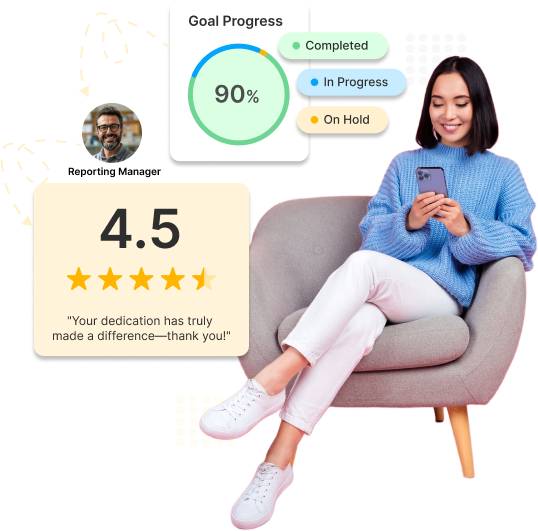
5. You’re Throwing Training at People With No Follow-Through
If you’ve ever assigned mandatory training and then had no idea who actually completed it—or whether it made a difference—you’re not alone.
Remember that PeopleGoal + ProProfs Training Maker example? That wasn’t just about ticking boxes. It was about turning training into progress that managers could see, discuss, and reinforce.
Without integration, training is isolated. With it, it becomes part of performance.
In short…
A modern performance management system doesn’t just track performance. It helps you:
- Define success
- Coach better
- Review fairly
- Recognize effectively
- Develop intentionally
And yes—sleep better, knowing it’s not all living in your inbox.
Alright, you’re sold on the idea. You know the problems. You’ve seen the magic a system can unlock. So now comes the real test:
How to Choose the Right Performance Management System (Without Regretting It in 6 Months)
Let me be honest—I’ve watched more teams crash and burn during this step than any other.
Not because they didn’t care.
Not because they didn’t research.
But because they approached the process like buying office furniture: “Looks good, fits our budget, let’s do it.”
But choosing a performance management system isn’t a one-time purchase. It’s a cultural commitment.
So let me walk you through how successful teams actually do this—and how you should too.
Step 1: Don’t Start with the Tool. Start with Your Culture.
Here’s the question nobody asks soon enough: What kind of performance culture do we actually want to build?
Do you value frequent feedback or structured reviews? Do your managers coach actively, or need nudging? Is your team remote, hybrid, or distributed across five time zones?
Before you demo anything, align internally on what performance should feel like at your company.
Because if your culture runs on autonomy and peer feedback, but you buy a rigid, top-down review system, you’re not buying software. You’re buying resistance.
Step 2: Involve the Right People—Early
I once watched a People Ops team select a tool with barely any input from frontline managers. When the rollout came, the pushback was immediate: “This doesn’t reflect how we work.”
Haha! Funny, right?
Here’s who should have a seat at the table:
- A couple of managers who’ll use the system weekly
- One or two employees with strong opinions (you want them)
- HR, obviously
- And if you’re in a scaling company, someone from leadership
Why? Because performance management touches everyone. If they help shape the process, they’ll own the outcome.
Step 3: Get Obsessed with Fit, Not Flash
The best employee performance management system isn’t the one with the fanciest dashboard. It’s the one that fits your weird little org like a glove.
Instead of asking, “Does this tool do X?” ask:
- “Does this mirror how we set goals today?”
- “Would our managers actually use this every week?”
- “Does this system support the kind of conversations we want to have?”
In other words, don’t buy someone else’s solution to a problem you don’t have.
Step 4: Pressure-Test with Reality, Not Hypotheticals
Here’s something I always recommend: Run your last review cycle inside the demo environment. Use real employee data. Try importing a few development goals. Ask someone from marketing to run a mock 1:1.
Watch what breaks. Watch where people hesitate. That’s what adoption resistance looks like.
Good tools disappear into the workflow. Bad ones become “yet another thing to log into.”
Step 5: Choose a System That Grows With You
Performance management is not a “set it and forget it” operation. Teams change, strategies shift, and what worked when you had 40 employees may buckle at 140.
So ask vendors:
- How easily can we reconfigure HR workflows?
- What does scaling look like across locations or departments?
- Can we evolve from basic reviews to integrated development as we mature?
Think of it like buying a house. You want something that fits now and won’t burst at the seams when you grow.
Step 6: Look Beyond the Tool—Assess the Partnership
Yes, you’re buying software. But what you’re really buying is a relationship.
- Will they support you post-launch?
- Do they train your team or hand you a PDF?
- Are they just selling, or actually solving?
One client I worked with chose a slightly less powerful system—not because it had more features, but because the vendor offered real onboarding help, manager coaching templates, and monthly check-ins. Six months in, adoption was at 94%, which is unheard of.
So, you’ve got the right mindset, you’re on track to find the right system—now let’s answer the golden question:
What Are the Benefits of a Performance Management System?
Before we begin, here’s something I tried creating. The idea is to denote the real benefits.
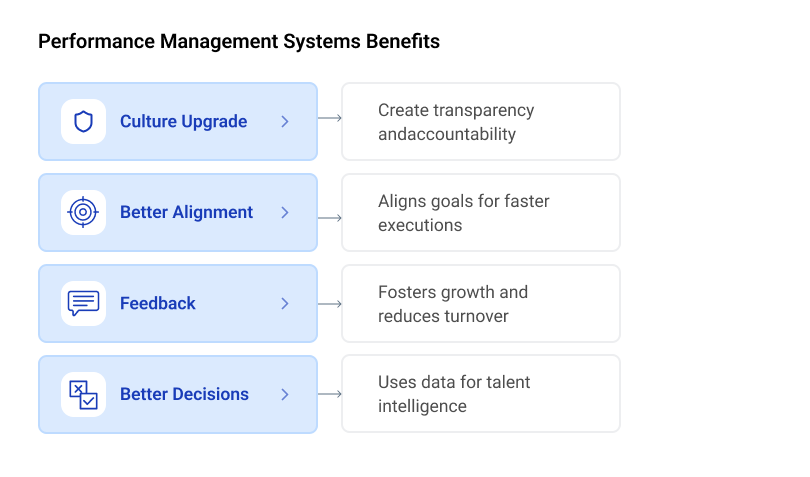
Now, some leaders ask this with a healthy dose of skepticism:
“Sure, we’ll have clearer goals and fewer awkward reviews… but does it really move the needle?”
Short answer: Yes.
Longer answer? Let me show you how.
1. Better Alignment = Sharper Execution
When employees know exactly what they’re aiming for—and how it ladders up to team and company goals—everything speeds up.
Let me explain this with an example:
I once worked with a scaling SaaS company that used its employee performance management system to roll out quarterly OKRs. Within two quarters, they saw:
- 37% faster project completion
- Cross-team handoffs improve (fewer “Oh, I didn’t know you needed that” moments)
- More initiative from individual contributors, because they saw how their work mattered
You don’t get those results from a motivational poster. You get them from alignment.
2. Feedback = Retention
This one’s personal. Years ago, I left a job—not because I was unhappy, but because I genuinely didn’t know if I was doing well. I got silence after every big project. Not even a “nice job.”
When companies implement regular, meaningful feedback through a structured staff performance management system, people feel seen. Valued. Coached.
And guess what?
- Companies with regular feedback see up to 14.9% lower turnover
- Recognition is one of the top three drivers of employee engagement
- High performers stay when they feel they’re growing
So, yes—feedback saves headcount.
3. Better Decisions with Better Data
Without a system, performance data lives in managers’ notebooks and Slack DMs. With one, you get dashboards that drive real decisions.
Imagine being able to:
- Spot your top performers early (even the quiet ones)
- Understand which departments are over- or under-coaching
- Tie development to promotion-readiness
- Present leadership with actual patterns, not hunches
For one PeopleGoal client, integrating with ProProfs Training Maker created a full feedback-to-development-to-promotion loop. Promotions weren’t just “gut feel” anymore. They were backed by training completion, feedback quality, and goal attainment.
That’s not just performance tracking. That’s talent intelligence.
4. Culture Upgrade (That You Can Actually Measure)
Let’s be real: Culture is often treated like a soft, fuzzy concept. But performance culture? That’s concrete.
When done right, a performance management system creates:
- More transparency
- More accountability
- More coaching and growth
- More shared wins
I’ve seen teams transform from “avoid reviews at all costs” to “I actually look forward to feedback week.” That’s not magic. That’s habit, structure, and visibility.
And yes, you can measure it via employee engagement scores, retention metrics, 1:1 frequency, and even internal mobility.
Real-World Success Stories: Who’s Using a Performance Management System
When performance management goes beyond checkboxes and actually solves problems, the impact is undeniable. Let me share two standout stories that show what a modern system can do when it’s matched to the right team, culture, and goals.
1. Viva Wallet: Automating Chaos into Clarity
Viva Wallet rolled out PeopleGoal to automate both their onboarding and performance review processes, replacing paper-heavy workflows with a digital-first approach that scaled effortlessly.

2. Leica Geosystems: Connecting Data for a Global View of Performance
Leica Geosystems used PeopleGoal to centralize performance tracking, connect disparate systems, and bring global consistency to reviews and goals.

Performance Management Isn’t Just a System—It’s a Strategy
If you’ve made it this far, you’re already ahead of most organizations.
Because here’s the truth: performance doesn’t improve by accident. It improves with structure. With intention. With systems that turn vague expectations into shared goals, scattered feedback into meaningful growth, and annual reviews into an ongoing conversation.
And no, it doesn’t have to be overwhelming. The best systems grow with you, not at you. Whether you’re a 25-person team or a 500-employee organization, performance is your engine. And systems like PeopleGoal don’t just monitor it—they accelerate it.
So here’s my challenge to you:
Take the next step. Audit your current process. Ask your managers what’s working and what isn’t. Then, look at your people and ask: Are we helping them succeed, or are we just hoping they figure it out?
Frequently Asked Questions
How secure is employee data in a performance management system?
Very secure—if you’re using a reputable platform like PeopleGoal. Most modern systems are GDPR/CCPA compliant, offer role-based access control, and encrypt all sensitive data in transit and at rest. You should still ask vendors about their security certifications (e.g., SOC 2 Type II, ISO 27001) before signing off.
What’s the difference between performance management and performance enablement?
Think of performance management as measuring performance—and performance enablement as fueling it.
- Management focuses on tracking goals, giving feedback, and evaluating outcomes
- Enablement adds coaching, personalized development, learning tools, and recognition systems to proactively improve performance
Modern platforms often blend both, but few execute both well. Look for tools that coach as well as track.
Can we customize the performance review questions and templates to match our values?
Yes—and you should. Most flexible systems let you tailor everything from rating scales and competencies to review questions and goal categories. That means you can align the system with your company values, leadership principles, or job-specific skill sets instead of forcing everyone into a generic template.
What happens if we stop using the tool or switch vendors—do we lose our historical data?
Good platforms let you export your data in readable formats (CSV, Excel, PDF), and some even offer migration tools or APIs. But be sure to ask this upfront. Losing performance data means losing years of growth history, development context, and promotion insights. You don’t want that.
Ready to 3x Your Teams' Performance?
Use the best performance management software to align goals, track progress, and boost employee engagement.

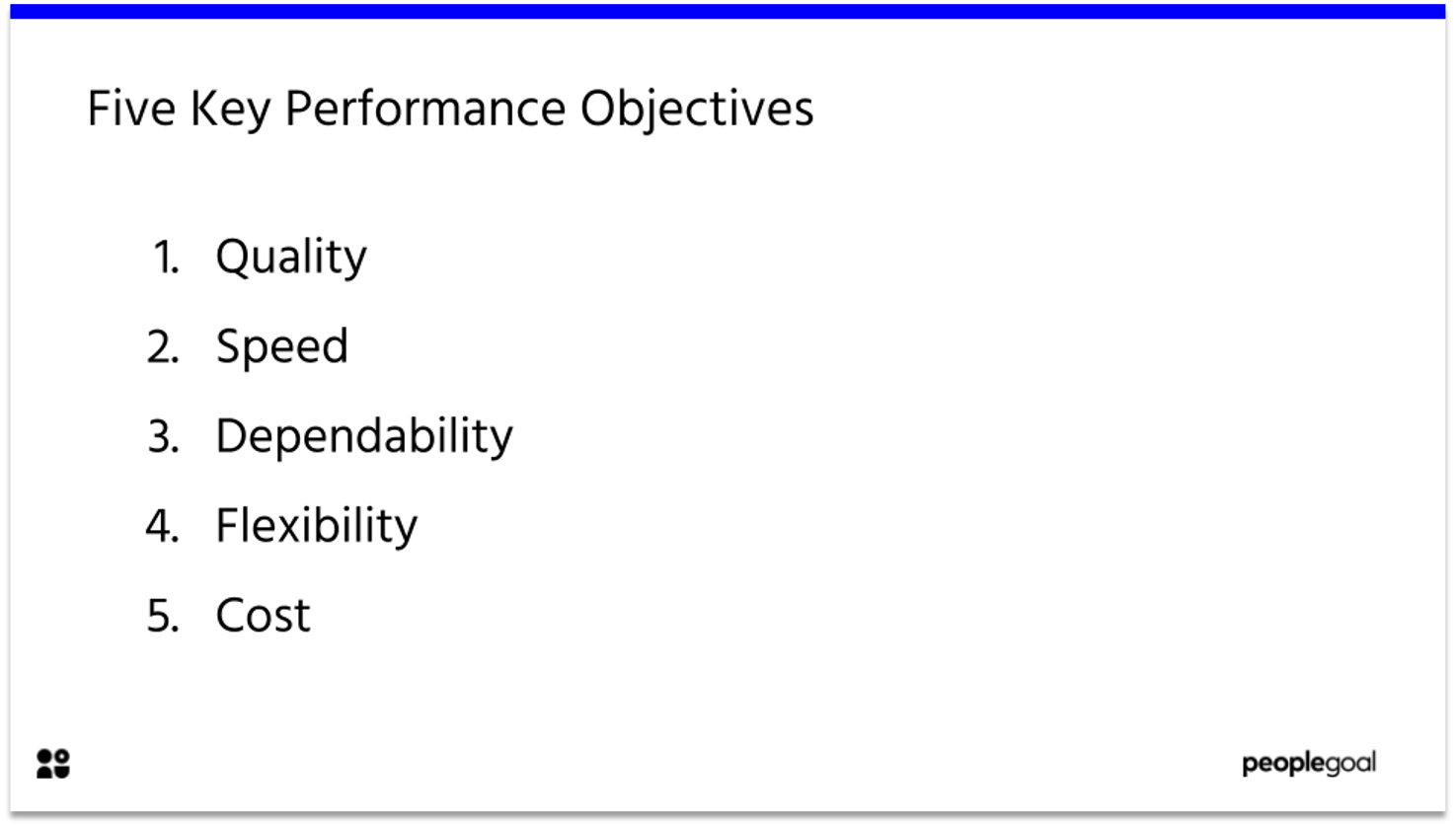
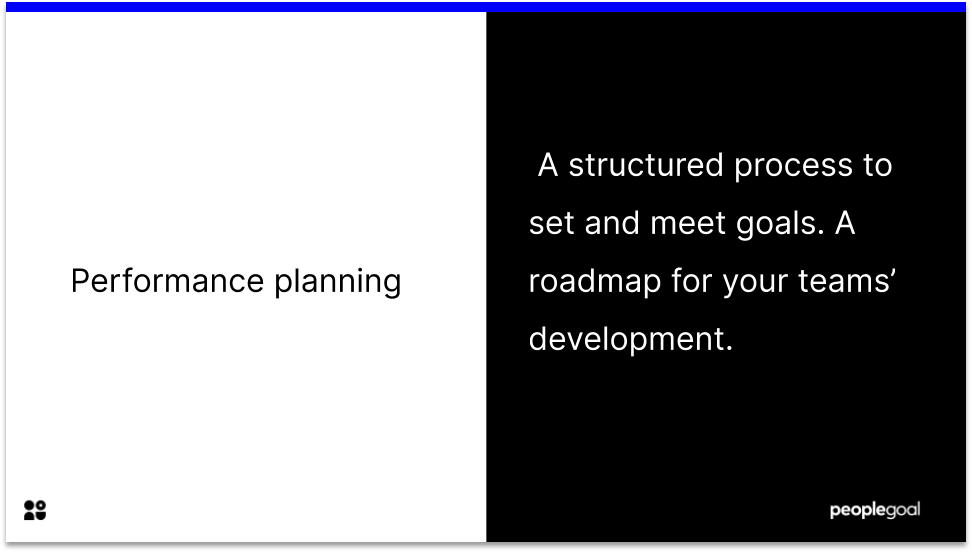
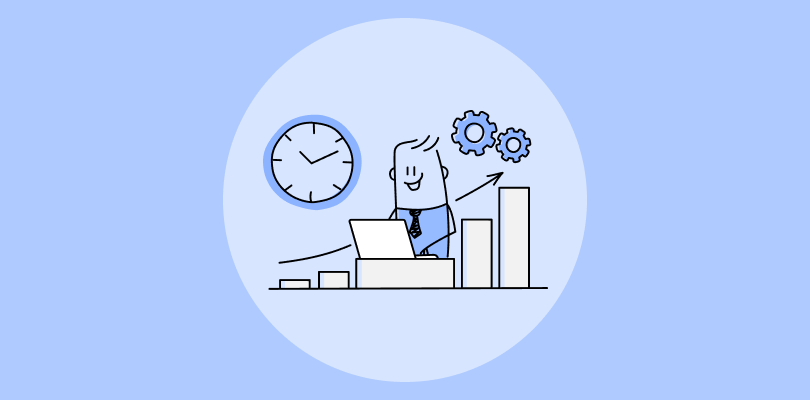

![What Is Employee Performance Management? [Tips to 3x Productivity]](https://www.peoplegoal.com/blog/wp-content/uploads/2019/08/What-Is-Employee-Performance-Management_.png)
